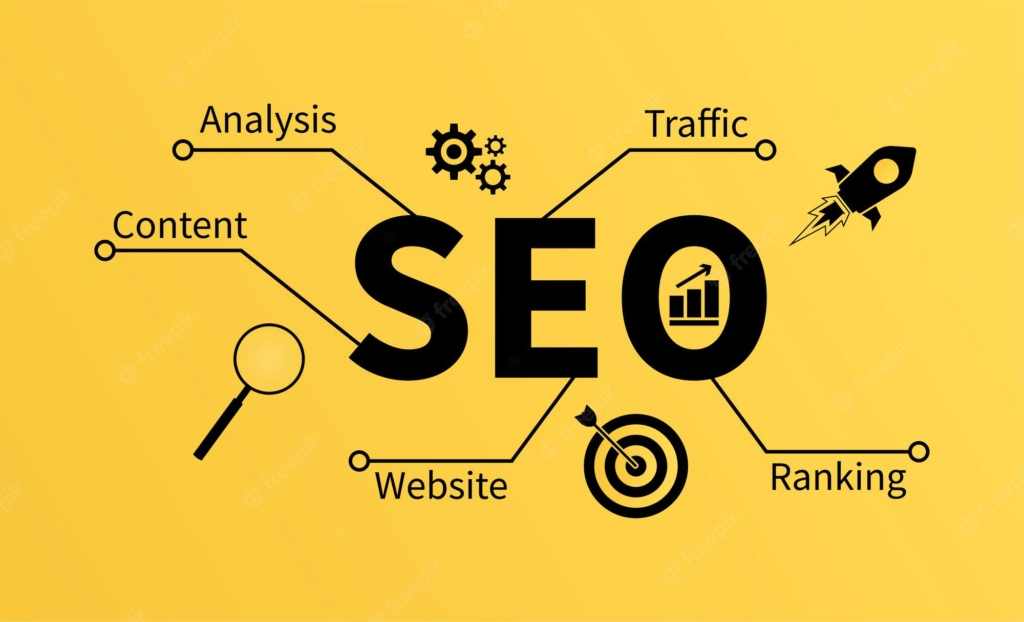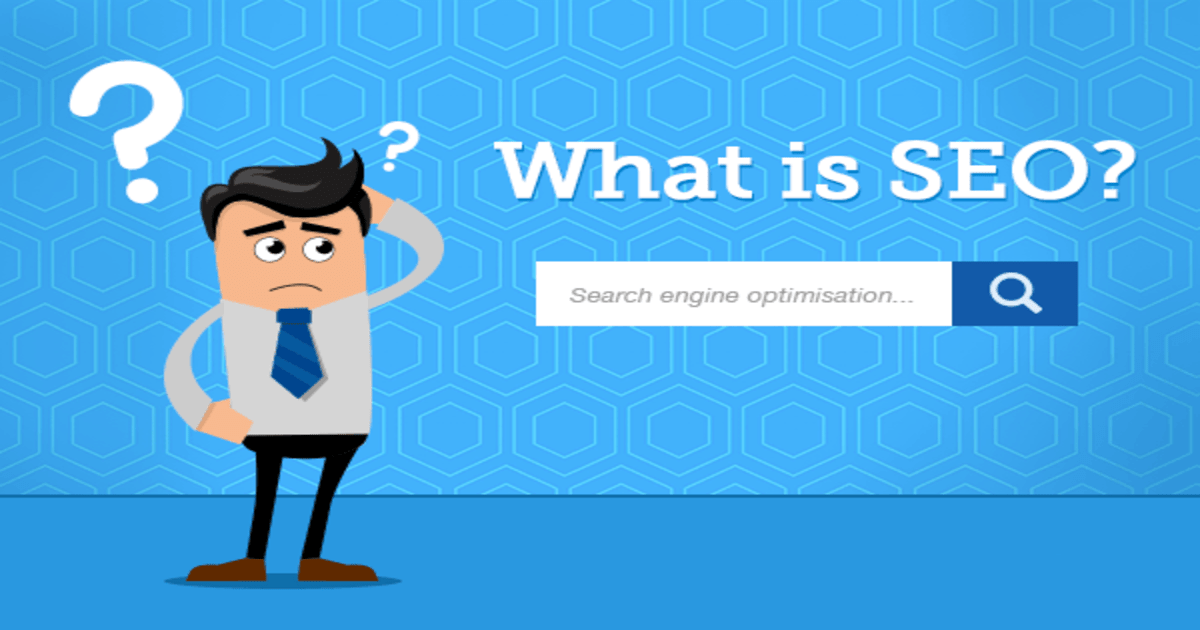SEO, short for “search engine optimization”, involves enhancing your website’s visibility on search engines like Google and Microsoft Bing. This process aims to make your site more discoverable when people search for products, services, or topics aligned with your expertise. Improved visibility boosts the likelihood of users finding and clicking on your pages, ultimately attracting potential customers or loyal audiences.
Throughout this guide, you’ll delve into:
- How SEO differs from SEM and PPC
- Why SEO is important
- SEO types and specializations
- How SEO works
- How to learn SEO

How SEO differs from SEM and PPC :
- SEO = driving organic traffic from search engines.
- SEM = driving organic and paid traffic from search engines.
- PPC = pay-per-click
SEO vs. SEM
SEO (search engine optimization) and SEM (search engine marketing) often get interchanged or misunderstood. SEM encompasses both paid (PPC – pay-per-click) and unpaid efforts (SEO) to enhance a website’s visibility and drive traffic through search engines.
SEO focuses on obtaining organic traffic by optimizing a website to rank higher in search engine results. On the flip side, SEM includes both organic (SEO) and paid strategies (PPC) to boost overall visibility in search engine results pages.
Thinking of SEM as a coin, SEO represents one side—focused on organic traffic—while PPC represents the other side, concentrating on paid traffic. While they’re distinct components, together they form the broader strategy to increase a website’s prominence in search results.
SEO vs. PPC
PPC (pay-per-click) and SEO (search engine optimization) indeed represent the paid and unpaid sides of search marketing, respectively.
PPC involves advertisers bidding on specific keywords to display their ads in search engine results. These ads appear prominently when users search for those particular keywords or phrases, and the advertisers pay when their ads are clicked.
On the other hand, SEO focuses on optimizing a website’s content and structure to naturally rank higher in search engine results, generating organic traffic without direct payment for clicks.
Both PPC and SEO have their advantages and play vital roles in a comprehensive search marketing strategy. While PPC offers immediate visibility and control over ad placements, SEO provides long-term benefits by building organic credibility and sustainable traffic.
Understanding that they’re complementary rather than competing channels is crucial. Leveraging both strategies together can maximize a website’s visibility and drive traffic from various sources, catering to different user preferences and behaviors.
Why SEO is important :
SEO is a critical marketing channel. First, and foremost: organic search delivers 53% of all website traffic.
That’s one big reason why the global SEO industry is forecast to reach a staggering $122.11 billion by 2028. SEO drives real business results for brands, businesses and organizations of all sizes.
Whenever people want to go somewhere, do something, find information, research or buy a product/service – their journey typically begins with a search.
But today, search is incredibly fragmented. Users may search on traditional web search engines (e.g., Google, Microsoft Bing), social platforms (e.g., YouTube, TikTok) or retailer websites (e.g., Amazon).
In fact, 61% of U.S. online shoppers start their product search on Amazon, compared to 49% who start on a search engine like Google. Also of note from that same research:
- 32% start on Walmart.com.
- 20% start on YouTube.
- 19% start on Facebook.
- 15% start on Instagram.
- 11% start on TikTok.
Trillions of searches are conducted every year. Search is often the primary source of traffic for websites, which makes it essential to be “search engine friendly” on any platform where people can search for your brand or business.
What this all means is that improving your visibility, and ranking higher in search results than your competition, can positively impact your bottom line,
SEO is also incredibly important because the search engine results pages (or SERPs) are super competitive – filled with search features (and PPC ads). SERP features include:
- Knowledge panels.
- Featured snippets.
- Maps.
- Images.
- Videos.
- Top stories (news).
- People Also Ask.
- Carousels.
Another reason SEO is critical for brands and businesses: unlike other marketing channels, good SEO work is sustainable. When a paid campaign ends, so does the traffic. Traffic from social media traffic is at best unreliable – and a fraction of what it once was.
SEO is the foundation of holistic marketing, where everything your company does matters. Once you understand what your users want, you can then implement that knowledge across your:
- Campaigns (paid and organic).
- Website content.
- Social media properties.
SEO is a channel that drives the traffic you need to achieve key business goals (e.g., conversions, visits, sales). It also builds trust – a website that ranks well is generally regarded as authoritative or trustworthy, which are key elements Google wants to reward with better rankings.

SEO types and specializations :
Types of SEO
There are three types of SEO:
- Technical SEO: Optimizing the technical aspects of a website.
- On-site SEO: Optimizing the content on a website for users and search engines.
- Off-site SEO: Creating brand assets (e.g., people, marks, values, vision, slogans, catchphrases, colors) and doing things that will ultimately enhance brand awareness and recognition (i.e., demonstrating and growing its expertise, authority and trustworthiness) and demand generation.
Technical optimization
Technical optimization serves as the cornerstone of SEO success, revolving around refining a website’s technical facets.
At its core, technical optimization begins with architectural design – crafting a website that search engines can seamlessly crawl and index. As aptly emphasized by Google’s trends analyst Gary Illyes in a Reddit AMA, the priority is to ensure the site is “CRAWLABLE.”
Facilitating search engines in discovering and accessing all content across pages involves a keen focus on technical elements. Elements like URL structure, navigation, internal linking, and more are pivotal in this endeavor.
Experience stands as another critical factor in technical optimization. Search engines prioritize pages that load swiftly and offer superior user experiences. Technical SEO considers Core Web Vitals, mobile-friendliness, usability, HTTPS implementation, and the avoidance of intrusive interstitials to enhance site performance.
Structured data, also known as schema markup, forms an essential part of technical optimization. Integrating this code into a website significantly aids search engines in comprehending content, ultimately enhancing its visibility in search results.
Furthermore, technical optimization encompasses aspects beyond design and user experience. It extends to vital components such as web hosting services, the content management system (CMS), and site security, all of which contribute significantly to the site’s overall SEO performance.
Content optimization
In SEO, your content needs to be optimized for two primary audiences: people and search engines. What this means is that you optimize the content your audience will see (what’s actually on the page) as well as what search engines will see (the code).
The goal, always, is to publish helpful, high-quality content. You can do this through a combination of understanding your audience’s wants and needs, data and guidance provided by Google.
When optimizing content for people, you should make sure it:
- Covers relevant topics with which you have experience or expertise.
- Includes keywords people would use to find the content.
- Is unique or original.
- Is well-written and free of grammatical and spelling errors.
- Is up to date, containing accurate information.
- Includes multimedia (e.g., images, videos).
- Is better than your SERP competitors.
- Is readable – structured to make it easy for people to understand the information you’re sharing (think: subheadings, paragraph length, use bolding/italics, ordered/unordered lists, reading level, etc.).
For search engines, some key content elements to optimize for are:
- Title tags
- Meta description
- Header tags (H1-H6)
- Image alt text
- Open graph and Twitter Cards metadata
Off-site optimization
There are several activities that may not be “SEO” in the strictest sense, but nonetheless can align with and help contribute indirectly to SEO success.
Link building (the process of acquiring links to a website) is the activity most associated with off-site SEO. There can be great benefits (e.g., rankings, traffic) from getting a diverse number of links pointing at your website from relevant, authoritative, trusted websites. Link quality beats link quantity – and a large quantity of quality links is the goal.
And how do you get those links? There are a variety of website promotion methods that synergize with SEO efforts. These include:
- Brand building and brand marketing: Techniques designed to boost recognition and reputation.
- PR: Public relations techniques designed to earn editorially-given links.
- Content marketing: Some popular forms include creating videos, ebooks, research studies, podcasts (or being a guest on other podcasts) and guest posting (or guest blogging).
- Social media marketing and optimization: Claim your brand’s handle on any and all relevant platforms, optimize it fully and share relevant content.
- Listing management: Claiming, verifying and optimizing the information on any platforms where information about your company or website may be listed and found by searchers (e.g., directories, review sites, wikis).
- Ratings and reviews: Getting them, monitoring them and responding to them.
Generally, when talking about off-site, you’re talking about activities that are not going to directly impact your ability to rank from a purely technical standpoint.
However, again, everything your brand does matters. You want your brand to be found anywhere people may search for you. As such, some people have tried to rebrand “search engine optimization” to actually mean “search experience optimization” or “search everywhere optimization.”
SEO specialties
Specialized branches within the realm of search engine optimization introduce diverse tactics and distinct challenges that differ from traditional SEO approaches. Here are five such specialties:
- Ecommerce SEO: This field delves into additional optimization techniques, focusing on aspects like category and product pages, faceted navigation, internal linking structures, product imagery, reviews, schema markup, and more.
- Enterprise SEO: Operating on a grand scale, Enterprise SEO deals with managing websites boasting over a million pages or aligns with the scale of organizations generating substantial revenue, often in millions or billions annually. The challenges include navigating delays in implementing SEO changes by the development team and engaging multiple stakeholders.
- International SEO: Catering to global businesses, International SEO revolves around optimizing multilingual or multiregional websites. It involves adapting strategies to align with international search engines like Baidu or Naver, among others.
- Local SEO: This specialization targets enhancing website visibility in local organic search engine results. It encompasses strategies focused on acquiring reviews, managing business listings, and other location-specific optimization techniques.
- News SEO: Urgency takes precedence in News SEO, where speed is crucial for indexing on platforms like Google Discover, Google’s Top Stories, and Google News. Best practices involve mastering paywall strategies, section pages, implementing news-specific structured data, and more to ensure optimal visibility in news-related searches.
How SEO works :
Certainly, if you arrived at this page through a Google search, chances are you used keywords like “what is SEO” or simply “SEO.”
This comprehensive guide resides on Search Engine Land, a reputable platform with profound expertise and extensive experience in the realm of SEO, covering all facets of SEO developments since as early as 2006.
Initially published in 2010, our “what is SEO” page has garnered an impressive 324,203 backlinks. These factors, among others, have contributed to establishing this guide’s credibility with search engines, consistently securing its top-ranking Position 1 for an extended period. It has amassed signals signifying its authority and trustworthiness, meriting its placement when users search for SEO-related queries.
Zooming out to view SEO from a broader perspective, its efficacy stems from a synergy of components:
- People: The individuals or teams responsible for strategizing, executing, and overseeing the comprehensive SEO initiatives.
- Processes: The structured steps and workflows undertaken to optimize SEO strategies efficiently.
- Technology: The diverse array of platforms, tools, and software employed to augment SEO efforts.
- Activities: The tangible outcomes and outputs resulting from implemented SEO strategies.
Numerous other factors contribute to the functionality and success of SEO. Here, we’ll delve into a high-level overview of the pivotal knowledge and procedural elements fundamental to SEO’s workings.
Sure, here’s a revised version:
Understanding the Fundamental Aspects of SEO
SEO operates through a multifaceted amalgamation:
- Understanding Search Engine Mechanics: For visibility on any search platform, comprehending the technicalities of how engines function is essential. Four main stages—crawling, rendering, indexing, and ranking—are pivotal in the context of traditional web search engines like Google. However, optimizing for platforms like YouTube or Amazon differs significantly. Platforms have diverse metrics for ranking content; engagement levels, social connections, recency, or author credibility play distinctive roles across various platforms.
- Research: Extensive research bolsters SEO performance. This includes delving into audience personas, identifying valuable keywords, analyzing competitors’ strategies, aligning with business objectives, and conducting various website audits to uncover potential opportunities and shortcomings.
- Planning: Crafting a comprehensive SEO strategy involves setting clear goals, defining key performance indicators (KPIs), outlining project implementation, coordinating with stakeholders, employing suitable tools and technology, team structuring, budget allocation, and continuous result tracking.
- Creating and Implementing: Following research and planning, execution becomes imperative. This stage includes generating new content, optimizing existing pages, and purging outdated or underperforming content to align with SEO objectives.
- Monitoring and Maintenance: Continuous vigilance is vital. Regular monitoring ensures swift identification and rectification of website glitches, traffic anomalies, broken links, or other critical issues that might impede performance.
- Analyzing and Reporting: SEO progress relies on data. Utilizing website analytics tools and platforms to gather performance metrics is crucial. Comprehensive performance reports, structured at regular intervals, help track progress and drive informed decision-making. Reporting intervals often depend on the website type, commonly on a monthly or quarterly basis.
SEO’s efficacy is the product of these integrated elements. Each aspect influences the other, collectively steering SEO strategies towards success.
How to learn SEO :
Absolutely, staying updated and continuously learning in the field of SEO is crucial due to its ever-evolving nature. Here are some reliable resources and strategies to enhance your knowledge:
Resources for Learning SEO:
- Online Courses: Platforms like Coursera, Udemy, Moz Academy, and LinkedIn Learning offer structured courses covering various aspects of SEO, suitable for beginners to advanced learners.
- Blogs and Websites: Follow authoritative blogs like Search Engine Land, Moz Blog, Search Engine Journal, Ahrefs Blog, and Google Webmaster Central Blog. They regularly publish valuable insights, updates, and best practices in SEO.
- YouTube Channels and Podcasts: Video tutorials on channels like SEMrush, Backlinko, and podcasts like SEO 101 or The Authority Hacker Podcast offer auditory and visual learning experiences.
- Books and Guides: Books by SEO experts such as “The Art of SEO” by Eric Enge, “SEO for Dummies” by Peter Kent, or comprehensive guides like Google’s Search Engine Optimization Starter Guide can provide in-depth knowledge.
Learning Strategies:
- Networking and Events: Attend SEO conferences, webinars, workshops, and local meetups. These events offer opportunities to learn from industry experts, engage in discussions, and stay updated on the latest trends.
- Practical Implementation: Apply theoretical knowledge by working on personal projects or volunteering for SEO-related tasks. Hands-on experience can solidify understanding and skills.
- Experimentation and Analysis: Experiment with different SEO strategies, tools, or techniques on a test website or project. Analyze the outcomes to understand what works best and adapt accordingly.
- Stay Updated: Regularly check Google’s official updates, follow industry influencers on social media platforms like Twitter, LinkedIn, or specialized SEO forums like Reddit’s SEO community to keep pace with the latest trends and algorithm changes.
By leveraging these resources and strategies, you can develop a strong foundation and stay abreast of the dynamic field of SEO. Continual learning and practical application are key to becoming proficient in this domain.







